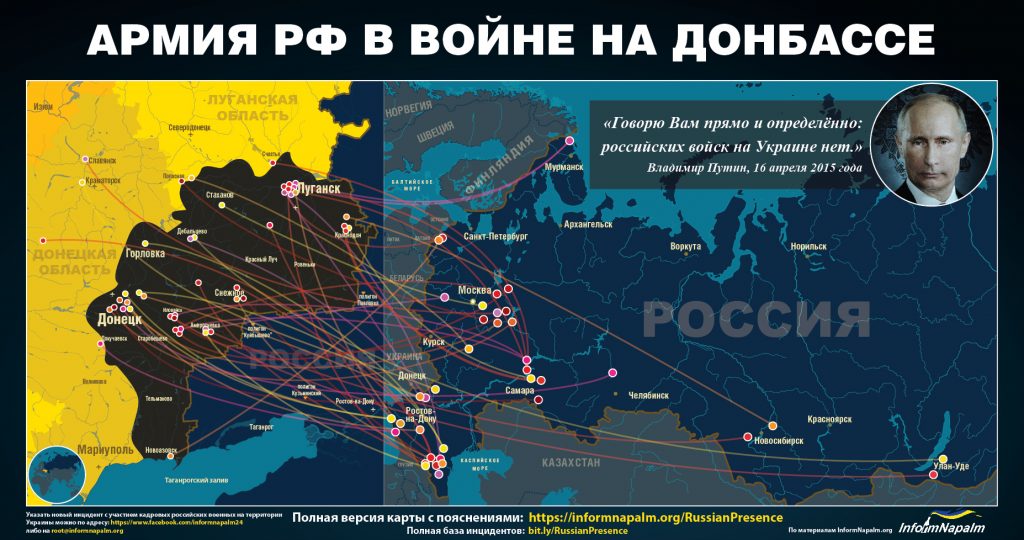Kyiv, August 28, 2015. Members of a grassroots InformNapalm project created a single multilingual database in a form of a Google table that provides information on 115 cases of Russian military presence in the East of Ukraine. The database contains links to articles with detailed analysis of the Russian presence supported by photo and video evidence. The table contains data on the Russian troops’ location and the incident according to the circumstances of detection and subdivisions that have participated participating in the incident, said Hennadiy Korniev, a member of InformNapalm editorial team, at a press briefing at Ukraine Crisis Media Center.
Photos of Russian troops in the social media serve as the source of information of their location thanks to geotagging instruments. Whenever such tag is unavailable, the location can be spotted by careful study of landscape or any other peculiar features. InformNapalm experts actively use information unveiled by Russian propaganda. “There was a case when a camera of a Russian state-owned channel was shooting a video on a military base and a white Volvo truck has been spotted on the background […], later it turned out the same truck was used to transport the Buk missile system that downed [Malaysia Boeing flight] MH17,” said Korniev.
Russian Armed Forces subdivisions are classified by their number and all incidents. Sixty subdivisions have been detected, mostly motorized and air assault troops.
The database is not complete and updated on a daily basis. According to the authors, once new information regarding certain event is published, there are always volunteers, including Russian citizens, willing to identify equipment, location or people. “When the number of incidents in our database exceeded 1,000, we will be able to speak of system analysis,” said Korniev. The project is led by volunteers, involving activists from all over Ukraine, including people from the temporarily occupied territories and troops from the frontline.
We also use international archive services as the evidence base in criminal proceedings to collect information.
According to Mykola Balaban, a member of InformNapalm portal’s editorial team, this database represents the most structured one describing Russian presence in eastern Ukraine. It also provides dynamics and certain trends. “InformNapalm’s philosophy lies in refraining from feeding the audience a ‘ready-made’ informational pill; our reader can make his or hers own conclusions,” said Balaban.
Experts created info graphics on the basis of fifty cases reflecting movement of the Russian troops from their home bases to checkpoints in eastern Ukraine. “This visualization shows the multitude of Russian military units being in Ukraine. These are not simple words: there is an article under each of these Bezier curves, providing detailed analysis […] on how and why these people were found in Ukraine,” said Korniev.
According to Balaban, the portal actively cooperates with the law enforcement agencies and Ukraine’s Security Service. The Ministry of Foreign Affairs of Ukraine also intends to use these materials during public debates in the United Nations as evidence of the Russian aggression and presence of the Russian Army on Ukrainian territory. Site traffic analysis shows that InformNapalm is actively followed by foreign diplomatic agencies as well as European and American national security agencies, said Balaban.






